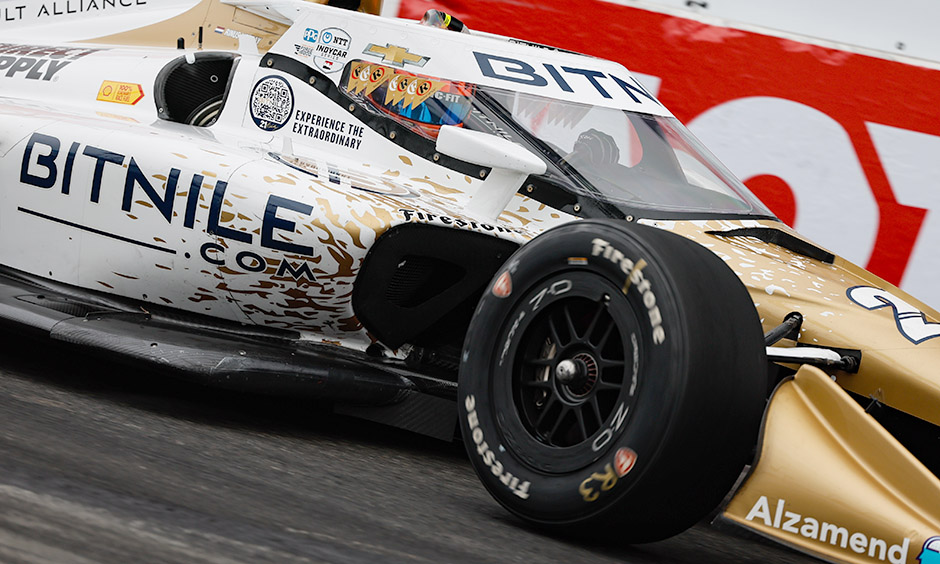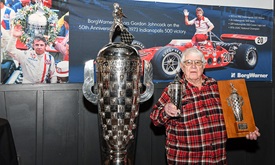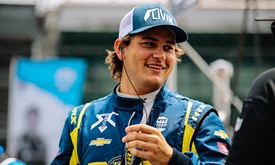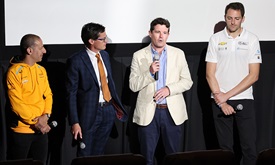The Setup: Barber with Matt Barnes
APR 25, 2023
Note: This is a continuing series for INDYCAR.com, with different guests, leading into each race weekend for the NTT INDYCAR SERIES, focusing on various technical challenges of each respective circuit.
The fourth round of the 2023 season for the NTT INDYCAR SERIES heads to the Deep South for this weekend’s Children’s of Alabama Indy Grand Prix at Barber Motorsports Park.
The 2.3-mile, 17-turn natural terrain road course features elevation changes that span 80 feet, along with a narrow 45-foot racing surface. There will be two practice sessions, an NTT P1 Award qualifying bout and morning warmup ahead of Sunday’s 90-lap (207 miles) race set for 3 p.m. ET (NBC, Peacock, INDYCAR LIVE and the INDYCAR Radio Network). The qualifying record is held by Pato O’Ward, who put down a flying lap of 1 minute, 5.5019 seconds in 2021.
This week’s featured guest is Matt Barnes, race engineer for Rinus VeeKay’s No. 21 Ed Carpenter Racing Chevrolet. Last year, Barnes helped guide the Dutch driver to pole and devised a car setup that led a race-high 57 laps before VeeKay finished third.
Q: What's it like preparing for Barber?
Matt Barnes: Barber has got so many challenges. First of all, there's some really high-speed, high-commitment corners there, some blind corners there. So, the combination of high speed, high commitment, and then there's some low-speed, tight turns; Turn 5 there. So, trying to find a good balance between high speed and low speed is probably the biggest challenge there, and then getting the driver confidence up to challenge those high-commitment corners.
Q: What would you say is the general rule for setting up a car at Barber?
Barnes: I think the driver needs to have a good platform there. So, it tends to be a stiffer car. Just to give a good platform to give that confidence in the driver. And then just trying to get the high-speed balance with the aero and then the low speed with the mechanical. The rule of thumb there is to get the car to turn mechanically but then balance the high speed, aero-wise, so you're tuning with two different parts of the car for any different sections of the track.
Q: What is the trickiest part or the most notorious trouble spot to try to get a hold of?
Barnes: Turn 9 can be really difficult. That's one place probably unique to the entire season. I think the car is off the ground for a long time, going downhill. You know, they're going out off-camber soft, so it's the kind of a downhill chicane, and they're bouncing off the curb, decelerating, hitting curbs and turning at the same time, and I think the wheels are off the ground quite a bit of that time. So, trying to tune for there and get that set up as part of the most unique challenge.
Q: Finding the balance at Barber, how tricky is that because you talk about low speed and high speed, not to mention the elevation changes, etc.?
Barnes: It's really tricky. Not only just find the balance of general, but the track changes so much from session to session there.
Q: It's temperature-sensitive?
Barnes: Really temperature-sensitive. Just some clouds or sun out there makes a big difference. In the morning, there's a lot of dew and just kind of the air is thick. Some of the track is slick in the morning, and as the day goes on and it grips up a bit. Yeah, so finding a good balance is hard; finding a good balance for every session was even harder.
Q: With that, how much do you see that car balance change over a full stint?
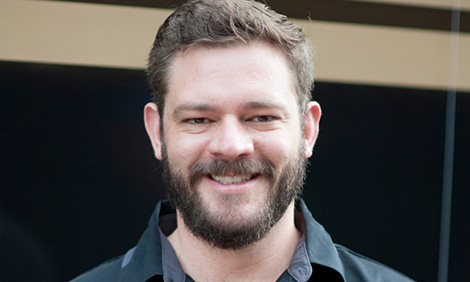 Barnes (photo, left): Last year it stayed pretty consistent over a stint. I think in the race we're able to keep the car in a fairly consistent place. But brand-new tires, in qualifying I think you’re really only going to get a couple laps out of them, and then balance changes quite a bit. So, you really have to tune the car for that first lap and not really worry about what happens on the second and third lap. That's one of the challenges just because what's a good balance on Lap 1 of qualifying might not be a good balance on Lap 2.
Barnes (photo, left): Last year it stayed pretty consistent over a stint. I think in the race we're able to keep the car in a fairly consistent place. But brand-new tires, in qualifying I think you’re really only going to get a couple laps out of them, and then balance changes quite a bit. So, you really have to tune the car for that first lap and not really worry about what happens on the second and third lap. That's one of the challenges just because what's a good balance on Lap 1 of qualifying might not be a good balance on Lap 2.
Q: Mechanical versus aero, what does Barber seem to favor?
Barnes: I think you have to pick one to be good at there. It's going to be a compromise. If you choose to be good in the high-speed corners, I think you tend to give up something you want in that more mechanical, low-speed stuff, and vice versa.
Q: What's more complementary for maximum lap time?
Barnes: For maximum lap time, you need to have the mechanical rotation. I think the driver can tend to compensate in the high speed with bravery, but if the thing doesn’t turn in the low speed, that just bleeds lap time.
Q: Are there any new additions coming to Barber this weekend?
Barnes: It is a different tire this year, so that’s going to be a factor. It’s actually the same tire as two years ago, but not the same tire as last year. They’ve been changed, the primary tire. One thing that's different is the bargeboards are allowed now this year, so it's going to change from last year.
Q: What does that do at a place like Barber?
Barnes: We’ll find out, but it should just add downforce.
Q: More toward the front of the car or just overall stability under the platform?
Barnes: It’ll add overall downforce. It can change the ride height characteristics of the car a little bit.
Q: So, maybe you're sitting up a little more because you don't want to risk hitting those?
Barnes: Yeah, but those are really the main changes from last year.
Q: Because you pointed out the track is temperature-sensitive, does it grip up as the weekend goes on or is that more dependent on the temperature – the rubber building up to create grip?
Barnes: It is more temperature dependent. Is the rubber buildng up creating grip? A little bit, but a lot of it has to do with the temperature. At some point, you get a lot of rubber, but then it's hot and becomes slick. If you get a track temp of 128 (degrees Fahrenheit) on the last session of the weekend and the first session was a track temp of 60, I think that track temp of 60 would be faster than the rubbered-up high track temp one. So, I think the temperature is a bigger factor than rubber going down there. Since they repaved it, it's just very, very smooth. The amount of rubber down doesn't impact it as much as the temperature does.
Q: Lastly, some drivers, it’s all about feel, and you’re trying to cater to them to be really fast. Based on last year, what did you learn about Rinus and Barber in terms of his feel and what do you think he might need to execute and get a win there this weekend?
Barnes: For Rinus, having a very neutral car is important or having as little understeer as possible. There's some drivers that prefer to have the car a little bit balanced more toward the understeer. It suits their style more. For Rinus, though, he needs a car that turns very well. So, that's what we try and target for him. And it's not to the dissimilar from drivers we've had before that have done well at Barber. Josef Newgarden, he kind of preferred a similar type of car there when he drove here (at ECR). He was on the pole and won there for us (in 2015). Same with Spencer (Pigot, made the Firestone Fast Six in 2019). He always did very well there, and I think that style of car tends to work across several drivers, but Rinus is no different than that. Usually, the drivers that want some more rear security tend to be a little bit slower. So, that's what Rinus and I think that's the fastest way there.
"Oh Yeah, Boys!"@rinusveekay delivers a monster run to grab his second career INDYCAR pole position.#INDYCAR // #HIGPA pic.twitter.com/Pylr8uXkWA
— NTT INDYCAR SERIES (@IndyCar) April 30, 2022










